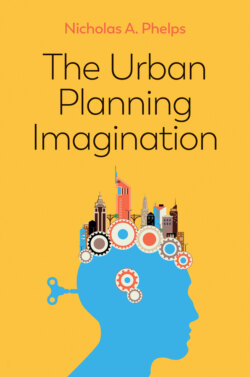Читать книгу The Urban Planning Imagination - Nicholas A. Phelps - Страница 12
Geography and the urban planning imagination
ОглавлениеIt is in place making and shaping that the definition of urban planning I have in mind has an inherently geographical aspect to it. The planning imagination must be a geographical one in its attention to the uniqueness of places. Geddes (1904) considered geographical method as fundamental to the comprehensive understanding of cities and their urban planning, drawing on geographical notions of the unity and coherence of places or regions, not least because ‘it takes the whole region to make the city’ (Geddes, 1904: 106). Seeing the city in these terms has been part of a modern planning tradition of the past 150 years and it ‘often seems a messy, conflict-ridden and threatening enterprise because it seeks to “integrate”, to connect, different areas of knowledge and practice around a place-focus’ (Healey, 2007: 13).
It is clear both historically and in the present that our cities have never been, and can never be, entirely closed or disconnected places. They are shot through with physical, virtual and remembered references, relations and connections to other places. It is vital, then, for the urban planning imagination to bring to bear a perspective on the seemingly general or universal nature of our urban existence. This sense of the partial convergence on more or less universal elements of urban planning is familiar to us in the shorthand term ‘globalization’.
If urban planning is an activity involving the shaping of places, then it is an act of imagination that must seek to reconcile these two geographical perspectives. It is a thoughtful activity in and through which what Doreen Massey (1989) termed a relational or global sense of place might be mobilized. Thus, in chapter 2 I will elaborate how a geographical perspective reveals the ‘betweenness of place’ (Entrikin, 1991) as both unique and bounded but also permeated by more or less common (cultural, economic, social, environmental) processes and relations. This geographical perspective reveals both the distinctiveness of different planning systems (chapter 6) and some of the elements of convergence and exchange among them (chapter 7).
